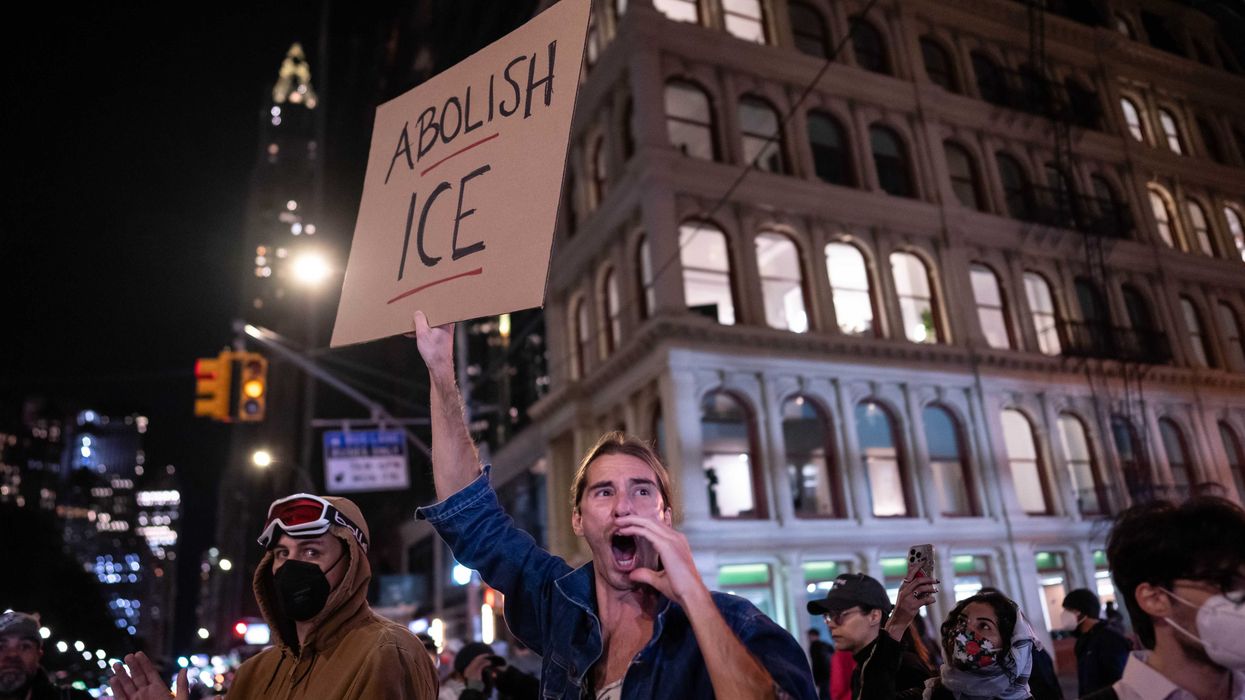Journalist and author Mark Leibovich joined Glenn on radio this morning to discuss his new book, This Town: Two Parties and a Funeral, and the current state of politics in America. Are we already a three-party system? And does Senator Ted Cruz (R-TX) have a legitimate chance at the presidency in 2016? Glenn and Mark discussed this and much more.
“Mark Leibovich, he is a guy who was writing a story for the New York Times Magazine about me. And when they came to me and said, New York Times Magazine wants to write something on you, I said, you've got to stand in line. And I don't think so. And I was told, no, no, we researched this guy. And I said, you researched everybody, and it never works out well and why would I do an interview with the New York Times. And they gave me a bunch of his stuff to read and it was on just a myriad of different people, and he always seemed fair,” Glenn said on radio this morning. “And I don't know, I would blame it on being drunk at the time, but I was totally sober and I said, all right. And the thing came out and it was fair, and I liked him. And I liked him because he had natural curiosity. He was not going for the typical things. He was actually trying to understand me and understand my point of view and what we were trying to do. I don't ever see natural curiosity in a reporter. I should say rarely do I see it in a reporter. They came in, they know what they're going to write, what they're going to tell and then they just find those things and then it's already written before they ever sit down. Wasn't like that with Mark.”
Glenn is a big fan of Mark’s book because of the candor and fairness with which he wrote it. As an employee of the New York Times, it could have been seen as a dangerous career move to write a book that criticizes all aspects of the political system, but Mark did it anyway. In the aftermath of its publication, however, he has seen some backlash.
“Oh, I'm told that every day now. I've given away the secret handshake. I guess it's a tough book. And it's tough on Democrats, and it's tough on Republicans. And it's certainly tough on the media. And it's tough for me because, you know, I'm a member of the media and, you know, I live there and these are people I go to work with,” Mark explained. “But the tenor of the criticism has been, how dare he. How dare anyone on the inside speak critically of others on the inside. And look, I'm very transparent. I live there. I live there of my own volition for now. I cover politics. I, for some reason, like politics and, you know, my family and I have a good life there. But it's a very comfortable town. It's the last place in America that should be as comfortable as it is. So I wanted to shake things up and name some names. And that's what I did, and it's been a little strange this summer. But mostly I've been out of town and the response has been pretty amazing.”
Mark’s book exposes some of the dysfunction that populates our nation’s capital. He explained that one of Washington’s biggest problems is the political class it has created. Politicians move from the House to the Senate to the consulting firm down the street. It’s a club that basically guarantees access for life, once you gain entry.
“So how do we fix this,” Glenn asked.
“That's a great question. You know what I would do? I would say this. If I were sitting in Iowa talking to a presidential candidate or talking to a candidate for House or Senate or something, the first question I would ask them is: What are you going to do if you lose? And how long are you going to stick around? Or after you're done serving, what are you going to do then? Are you going to come back? And they'll probably mostly lie and say, ‘Oh, yes, I'm going to come back and I'm going to volunteer in the soup kitchen or something like that.’ But at least you get the notion out there that politics, that public service is, in fact, public service,” Mark said. “I mean George Washington spent the last part of his life – I think you might have told me this – living in fear that he was going to do something after his presidency that would disgrace himself. No one has that anxiety. I mean, you know, yes, you can, like, do a 180 on everything you've promised and then lobby for the exact other side like Richard Gephardt, you know, who's a classic example of this, does and so many other people do, and there's no punishment. I would just get the conversation going in the direction not so much of left versus right but inside versus outside.”
Glenn has been talking about the merits of a three party system for a few weeks now, but in This Town, Mark argues that we already live in a country with three parties.
“First of all, I think Washington itself is one big party. I mean I think the big party here, the uber party here, is what you see in Washington now – the party of the grownups, as they say. Everyone says, oh, well, the grownups will take over now and we'll kick this down the road again,” Mark explained. “I think you have a, sort of a centrist party and then you have the sort of far left and then you have a wing – I mean, you call it the TEA Party now, but a wing of the Republican Party that, you know, could very, very legitimately – I don't know if it would break off formally.”
The media may vilify the like of Senators Ted Cruz and Mike Lee (R-UT), but Mark said their potential should not be underestimated.
“I mean first of all, they are not alone. Look at Ted Cruz's poll numbers,” he said. “I mean if you look at early presidential polls, Ted Cruz is going to be a serious, serious candidate for president on the strength of what we're talking about here.”
“Hold on just a second,” Glenn interrupted. “This is an editor of the New York Times Magazine saying that. I don't hear that from anybody else in the mainstream media, what you just said.”
“That Cruz is a serious candidate? They should say it because it's true,” Mark continued. “Look at the crowds he drew. It's a very, very real energy that if you take any time outside of Washington you can see.”
Ultimately, Mark explained that he wrote this book because he wants the American people to be able to hate Washington D.C. with at least some degree of understanding and detail of how it works.
“People have an intuitive sense that, you know, Washington is a swamp because people, when they run for office, say, ‘I'm going to drain the swamp’ and then they settle in like a warm Whirlpool bath. They just become part of it,” Mark said. “What I hope this book does is allows people to hate Washington with a greater degree of detail and specificity and frankly – and maybe this is me hoping beyond hope – introducing a piece of shame into the system… Look, the book, I hope, is entertaining. People laugh and people are outraged, which I think is a good combination because if you don't laugh, you cry. But very, very few people leave [this town] better than they come in.”
“The name of the book is This Town," Glenn said. "I think this is a book that can bring the left and right together and will actually explain to you what's really going on, what the problems are, from a guy who is just letting the chips fall where they may.
Watch the entire interview below:

 AASHISH KIPHAYET / Contributor | Getty Images
AASHISH KIPHAYET / Contributor | Getty Images
 Harold M. Lambert / Contributor | Getty Images
Harold M. Lambert / Contributor | Getty Images Adam Gray / Stringer | Getty Images
Adam Gray / Stringer | Getty Images Anadolu / Contributor | Getty Images
Anadolu / Contributor | Getty Images